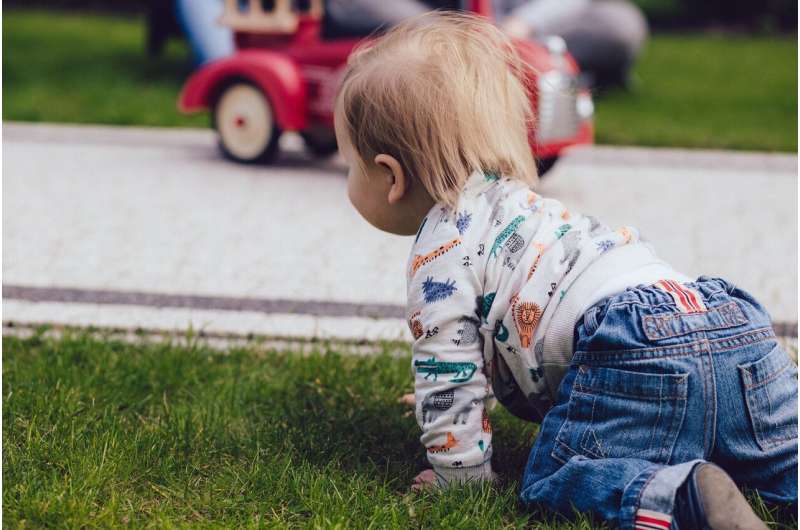
The more crawling experience a baby has, the more likely they are to avoid falling into water, a University of Otago study shows.
Published in Infancy, the work is part of a longitudinal study into the effect locomotor experience has on infants’ avoidance of falling over sudden drop-offs.
Lead author Dr. Carolina Burnay, of the School of Physical Education, Sport and Exercise Sciences, says the researchers tested babies’ behavior around a tub filled with water, termed a water drop-off.
“The main difference between the babies that fell and those who avoided falling in the water was the amount of crawling experience they had.
“A very interesting result was that the amount of prior crawling experience they had informed their perception of the risk and behavior even when they were already walking—hence it seems very helpful for babies to crawl and explore their environment,” she says.
The findings go against the contemporary tendency to “helicopter parent.”
“Caregivers should be aware of the important role crawling plays in infant development and the benefits of promoting crawling opportunities for their infants. By touching the floor and looking closely to it, infants learn to distinguish safe from unsafe surfaces to locomote and start avoiding falls, into the water or not.
“Over-protecting babies by limiting their opportunities to self-locomote does not keep them safe, instead, it delays their development of the perception of risky situations.”
Dr. Burnay has also conducted a study into how babies interact with a slope leading to water.
The study, just published in Developmental Psychobiology, allowed babies to move into the water down a gradual slope, similar to a beach leading to the ocean. In this case, locomotor experience had no impact on babies’ behavior—they were more likely to engage in risky behavior on the slope compared to the drop-off.
“Before these studies, we knew statistics about drowning among babies, numbers like how many babies drown every year, how many drowning incidents occur in beaches or swimming pools, and what ages are the most represented in drowning statistics. This new approach is investigating how infants relate with bodies of water, when and how they start perceiving the risk and avoiding drowning.
“If we want to develop better strategies to prevent drowning among young children, we need to understand how they interact with bodies of water and how they learn to perceive the consequences that interacting with bodies of water can impose,” Dr. Burnay says.
The study also highlights the risk slopes into bodies of water pose to babies. Parents and those working in water safety should have increased vigilance around such accessways and prevent infants’ access to them in aquatic environments.
Dr. Burnay is continuing her studies into how babies interact with bodies of water and is seeking participants (crawlers or walkers aged under 18-months) for testing at Moana Pool in Dunedin.
Source: Read Full Article
